UNIT 9
Background
-
1.Billboard magazine initiated several “charts” during the 1940s and 1950s, documenting the variety of musical styles evident in America and also the rapid growth of the record industry.
-
2.Stylistic interchanges among the various styles continued. And with the emergence of television and the invention of new record formats, more people were introduced to musical styles that in the past had been out of the mainstream (for example, rhythm and blues and country music).
-
3.In the decade that preceded rock and roll, the popular styles were musical theater, modern jazz, pop, rhythm and blues, and country music.
The Media Revolution
-
1.Emergence of commercial television
-
a.Television took over the role of radio as the primary source of entertainment. Live shows moved from radio to television.
-
b.To survive, radio began airing recorded music. Radio personalities called “disc jockeys” (DJs) usually chose the music to play.
-
2.Introduction of two new record formats
-
a.Up until the late 1940s, records were issued as 10-inch or 12-inch shellac discs with 78 rpm. They held only 3-4 minutes of music and broke easily.
-
b.In 1948 Columbia Records began issuing vinyl LP (long-playing) records, also known as 33-1/3 rpm records.
-
1)Held over a half hour or music and did not break easily.
-
2)Called “albums,” these records usually featured classical music, jazz, musical theater, and some pop, and were marketed to adults.
-
c.In 1949 RCA brought out the vinyl 45 rpm single.
-
1)Held 3 minutes of music and also didn’t break.
-
2)Known as “singles,” these records featured the newest music and were targeted to teenagers.
The Golden Age of Musical Theater
-
1.Background
-
a.Musical theater benefitted from the new record format; it aspired to be “art music” rather than popular music.
-
b.Musical theater did not take advantage of the advances in popular music that had been made during the 1920s and 1930s.
-
2.The musicals of Rodgers and Hammerstein
-
a.Richard Rodgers, who had collaborated for over 20 years with lyricist Lorenz Hart, began working with Oscar Hammerstein II (the lyricist for Showboat, 1927). See photo at right.
-
b.Their first success was Oklahoma! (1943), which was followed by many successful shows until Hammerstein’s death in 1960.
-
c.These musicals were built on the innovations of Showboat (discussed in Unit 4): depth of character portrayal, seriousness of plot, integration of the songs into the plot, and disregard of convention.
-
d.Rodgers wrote songs that are memorable and dramatically appropriate. He uses the popular song form (based on chorus) of his day, but in some ways his songs took a step backward:
-
1)Relied on melody and on classically-trained singers;
-
2)Characters usually don’t sing “in character”--for example, there is no hint of country-western music in Oklahoma!;
-
3)Little syncopation; no swing;
-
4)Theater orchestras almost sounded like symphony orchestras.
-
e.South Pacific (1949), by Rodgers and Hammerstein
-
1)The story centers around war and love during World War II and also deals with racial prejudice.
-
2)It is set in an exotic locale
-
3)“Some Enchanted Evening” (1949)
-
a)Sung by Emile, the lead male character, after he meets Nellie.
-
b)Musical theater song, with European-classical influences:
-
i.The singer is a classically-trained opera singer;
-
ii.The melody is long and flowing with no syncopation;
-
iii.The tempo is slow;
-
iv.The accompaniment is classical (orchestra with strings).
-
*Listen to “Some Enchanted Evening” by Richard Rodgers, and follow the Listening Cue in the text.
-
-
f.The musicals of Rodgers and Hammerstein belong to the “Golden Age” of musical theater. Some say that before Oklahoma! we remember only the songs in musical shows, and after Oklahoma! we also remember the story.
-
g.Musical theater stories became more compelling than ever before, and the music is distinctive and appropriate, if not progressive. (Remember that the earlier musical theater songs we discussed, such as “Yankee Doodle Boy” and “Can’t Help Lovin’ That Man,” were stylistically up-to-date when they were written.)
Beyond the Broadway Musical: West Side Story
-
1.West Side Story: first staged in 1957, filmed in 1961
-
a.West Side Story was the product of a collaboration among Leonard Bernstein, one of the foremost conductors and composers of the 20th century, Stephen Sondheim (lyricist), and Jerome Robbins (choreographer). See photo at right.
-
b.Libretto (story): a modern, realistic interpretation of Shakespeare’s Romeo and Juliet set in New York City in the late 1950s. Instead of the rivalry between the Capulets and the Montagues of Shakespeare’s play, West Side Story focuses on the rivalry between two gangs: the white Jets and the Puerto Rican Sharks.
-
c.Music: Bernstein uses many jazz and Latin influences, in addition to Tin Pan Alley songs.
-
d.Dance: The dance numbers are totally integrated into the story.
-
2.Innovations of dance in West Side Story
-
a.Bernstein wrote complex music for the dance numbers, mostly using jazz features.
-
b.Dance often expresses emotions that words cannot express.
-
c.“Cool”: essentially a jazz ballet
-
1)In the play, this dance comes after the deadly gang fight, when the Jets are angry and seeking revenge;
-
2)Song cannot express their emotions, but dance brings to life their nervous energy and tension.
-
-
3.Bernstein’s music in West Side Story represents a departure from the music of the Golden Age musicals of Rodgers and Hammerstein, who rarely used musical style to evoke a character or place. On the other hand, Bernstein used the “coolest” music around in the late 1950s, jazz and Latin music, which at that time had “outsider” associations, to characterize a story that takes place in contemporary New York City.
Modern Jazz
-
1.Bebop (or “bop”)
-
a.A radical new jazz style that began during the early 1940s at Minton’s Playhouse, a Harlem jazz club. Famous players include Dizzy Gillespie (see photo at right), Thelonious Monk, and Charlie Parker.
-
b.Bebop musicians were “counter-culture”: they believed in freeing jazz from swing dancing and from its role as “entertainment.” To these musicians, jazz was “art.”
-
c.Musical features:
-
1)Emancipation of the rhythm section from the role of beatkeeping: in bop, only the bass player marks the beat, while the other instruments play syncopated rhythms.
-
2)Rapid tempos: fast playing separated the good players from the mediocre ones.
-
3)Asymmetrical melodic lines: new melodies put to the chord progressions of familiar tunes.
-
4)Complex harmony: bop musicians added complex chords to the harmonic vocabulary.
-
5)Aggressive sound: we no longer hear the mellow timbres of earlier players.
-
6)Small group of instruments compared to the big bands of swing jazz.
-
d.Charlie (“Bird”) Parker (1920-1955)--see photos at right
-
1)Saxophone player and one of the most important musicians in bebop.
-
2)“Salt Peanuts” (1945)
-
a)Written by Dizzy Gillespie, who also plays trumpet and sings the riff. Gillespie puts a new melody to the chord progressions of Gershwin’s “I Got Rhythm.”
-
b)Parker plays alto sax, and the rhythm section comprises piano, bass, and drums.
-
-
e.Bebop was the first jazz style that was truly accepted as “art music.” It led to several other jazz styles, many of which were jazz-classical syntheses.
-
2.Jazz as Art
-
a.“Third-stream music” was a jazz/classical synthesis initiated by the Modern Jazz Quartet, Gunther Schuller, and the Beaux Arts String Quartet.
-
b.The Modern Jazz Quartet (see original members in photo at right and later members in photo below):
-
1)Influenced by classical chamber music:
-
a)Restrained dynamics;
-
b)Transparent textures;
-
c)Moderate tempos;
-
d)New formal structures: midway between the composed jazz of Duke Ellington and the improvisatory jazz of Dizzy Gillespie;
-
e)Small instrumental group.
-
2)“Django (1954) by John Lewis; here performed by the Modern Jazz Quartet in 1960
-
a)Mild swing rhythm, with interplay among the parts.
-
b)Arch form, with the solos leading to the high point of the arch, which is played twice as fast.
-
*Listen to “Django,” and follow the Listening Cue in the text.
-
c.The legacy of bebop and “post-bop” styles confirmed that jazz was for listening, not dancing. Most of the innovations made in post-World War II jazz remain standard today.
Popular Song Interpretation
-
1.Background
-
a.Many of the best popular songs were written before 1945, but most of the memorable singers were recorded in performances after 1945.
-
b.Three major developments confirm this new trend:
-
1)Pop singers now tended to favor “standards,” songs that have stood the test of time.
-
2)A new generation of singers emerged, some of whom had sung with big bands.
-
3)Increasing prominence of the singer. In the 1920s and 1930s, the vocals were sandwiched in between instrumental sections, now the vocals are more important than the instrumental parts.
-
2.Song Interpretation
-
a.Beginning the the 1930s, many singers tended to personalize a performance (remember Billie Holiday).
-
b.This became even more important after the war with singers like Nat “King” Cole, Frank Sinatra, and Ella Fitzgerald (see photos at right), who worked with arrangers on new versions of standards.
-
c.Essentials of interpretation:
-
1)Distinctive vocal style;
-
2)Perfect pacing of the song: singers were not bound to the original rhythm;
-
3)Subtly changing the melody, rhythm, or lyrics;
-
4)Personalizing a performance: the song sounds autobiographical.
-
d.Song examples:
-
1)“Unforgettable”: composed in 1951 and performed the same year by Nat “King” Cole
-
a)Cole was the most popular black artist in the post-war era and had numerous hits.
-
b)He sang mostly smooth ballads, although his jazz background comes through with his distinctive sound and perfect timing.
-
c)“Sweet” sounds: violins, rich texture, and Cole’s warm voice
-
*Listen to “Unforgettable,” and follow the Listening Cue in the text.
-
2)“You Do Something to Me”: a foxtrot song, composed by Cole Porter in 1929:
-
a)Performed by Frank Sinatra in 1951
-
i.Sinatra makes the song swing: he sings in a jazzy style and is accompanied by a big band with much syncopation.
-
ii.Known for his sense of timing, Sinatra subtly plays with the beat.
-
iii.He personalizes the song through his unique voice and somewhat edgy sound.
-
*Listen to “You Do Something to Me,” and follow the Listening Cue in the text.
-
b)Performed by Ella Fitzgerald in the 1950s:
-
i.Fitzgerald’s version is closer to the foxtrot original, yet there are also jazz influences, such as more syncopation.
-
ii.She personalizes the song through her sweet voice and her perfect sense of timing.
-
*Listen to Ella Fitzgerald singing “You Do Something to Me.”
-
Looking Back, Looking Ahead
-
1.1945 to 1954 was a decade of transition between the “modern era” (the 1920s through early 1940s) and the “rock era” to come. It witnessed an unprecedented diversity in musical styles (this will become even more evident in Unit 10).
-
2.In the second half of the 1950s, rock and roll would emerge, but it was not the most popular musical style right away. Other musical styles, such as pop and musical theater, would dominate the charts until the early 1960s.
Photos
-
1.Scene from West Side Story
-
2.Dizzy Gillespie
-
3.Nat “King” Cole
-
4.Ella Fitzgerald
-
5.Nat King Cole and Frank Sinatra
-
6.Richard Rodgers & Oscar Hammerstein, II

Popular Music Matures

Unit Nine
Popular Music Matures: Musical Theater, Modern Jazz, and Song Interpretation

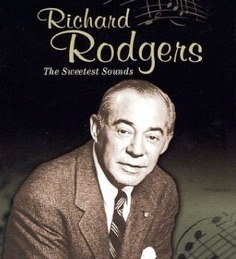
Richard Rodgers and Oscar Hammerstein II

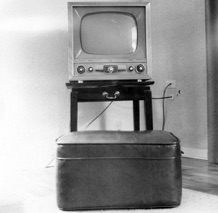
Early 1950s television set
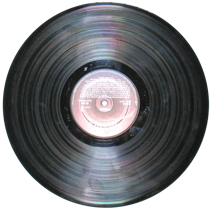
A typical 33-1/3 rpm record or “album”
Original Broadway cast recording of
South Pacific
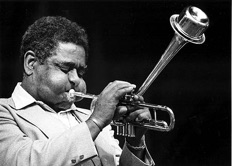
Dizzy Gillespie

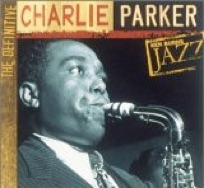
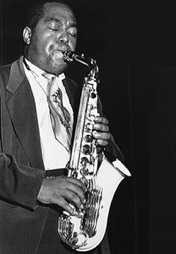
Charlie “Bird” Parker
The original Modern Jazz Quartet

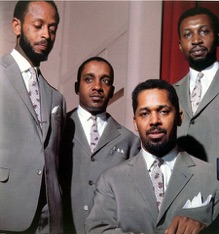
The Modern Jazz Quartet: Percy Heath (bass), Milt Jackson (vibraphone), John Lewis (piano), Connie Kay (drums)
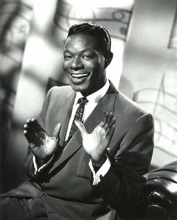
Nat “King” Cole (1917-1965)
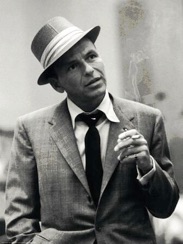

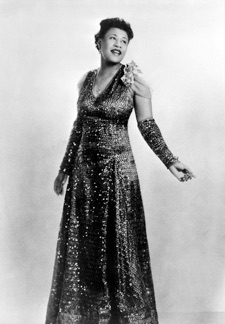
Frank Sinatra (1915-1998)
Ella Fitzgerald
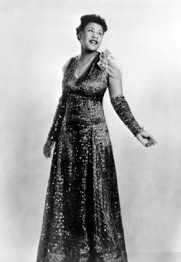
Ella Fitzgerald (1927-1996)
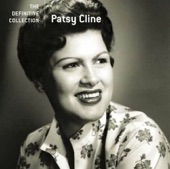

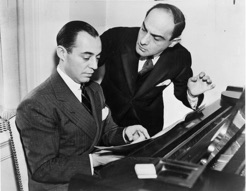
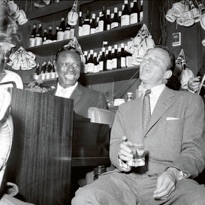


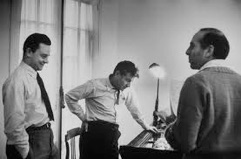
Sondheim, Bernstein, and Robbins
